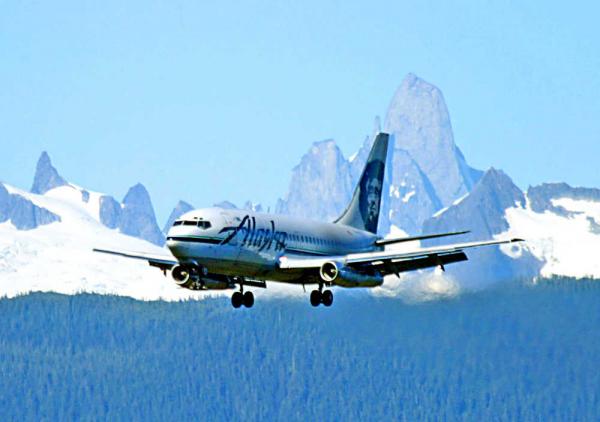Two Alaska Airlines flights in Southeast Alaska were struck by lightning Monday in separate incidents, leaving some passengers stranded and others delayed.
The first strike took place near Sitka as Flight 65, the morning milk run through Southeast Alaska, prepared to land at Sitka.
“It was Juneau to Sitka, and on the way into Sitka, it was struck,” said Ann Vininovich, a spokeswoman for Alaska Airlines.
The weather was not unexpected: The National Weather Service issued a “SIGMET” to pilots on Monday indicating lightning off northern Southeast, and the Weather Service Station in Juneau reported 396 lightning strikes overnight Sunday night into Monday.
Lightning strikes on aircraft are not uncommon, and modern passenger jets are designed to cope with them, but Alaska Airlines policy requires the struck aircraft to be taken out of service for a maintenance lookover, Vininovich said.
While that happened, a replacement plane was flown from Seattle to Sitka, and after about five hours of delay, the milk run resumed about 6:02 p.m.
Meanwhile, a second Alaska Airlines jet on another milk run was struck as it flew from Anchorage to Cordova. Flight 66 typically travels Cordova-Yakutat-Juneau-Seattle, but every leg after Cordova was canceled, according to Alaska Airlines’ log of departures and arrivals.
“Because of that one and the location where it was going, we actually needed to cancel the remaining legs of the flight so we could get it inspected in Seattle,” Vininovich said.
The 35 passengers aboard the flight are being lodged at Cordova’s Reluctant Fisherman Inn, and they will be placed on Flight 61, the morning flight out of Cordova, she said.
“We take every lightning strike seriously, and that’s why we do a full inspection and take the aircraft out of service,” Vininovich said. “Safety is our No. 1 priority.”

